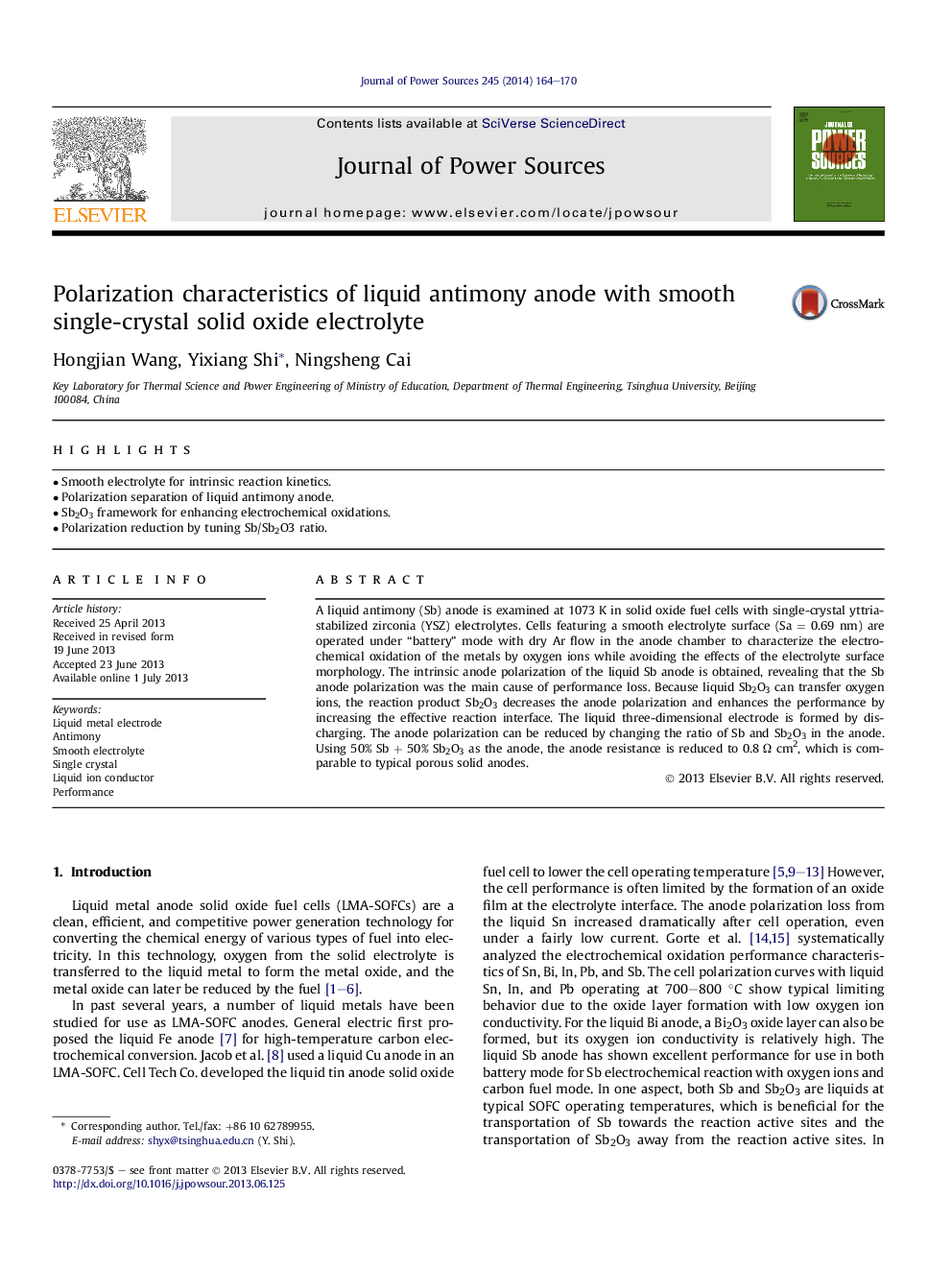| Article ID | Journal | Published Year | Pages | File Type |
|---|---|---|---|---|
| 7738647 | Journal of Power Sources | 2014 | 7 Pages |
Abstract
A liquid antimony (Sb) anode is examined at 1073 K in solid oxide fuel cells with single-crystal yttria-stabilized zirconia (YSZ) electrolytes. Cells featuring a smooth electrolyte surface (Sa = 0.69 nm) are operated under “battery” mode with dry Ar flow in the anode chamber to characterize the electrochemical oxidation of the metals by oxygen ions while avoiding the effects of the electrolyte surface morphology. The intrinsic anode polarization of the liquid Sb anode is obtained, revealing that the Sb anode polarization was the main cause of performance loss. Because liquid Sb2O3 can transfer oxygen ions, the reaction product Sb2O3 decreases the anode polarization and enhances the performance by increasing the effective reaction interface. The liquid three-dimensional electrode is formed by discharging. The anode polarization can be reduced by changing the ratio of Sb and Sb2O3 in the anode. Using 50% Sb + 50% Sb2O3 as the anode, the anode resistance is reduced to 0.8 Ω cm2, which is comparable to typical porous solid anodes.
Related Topics
Physical Sciences and Engineering
Chemistry
Electrochemistry
Authors
Hongjian Wang, Yixiang Shi, Ningsheng Cai,
